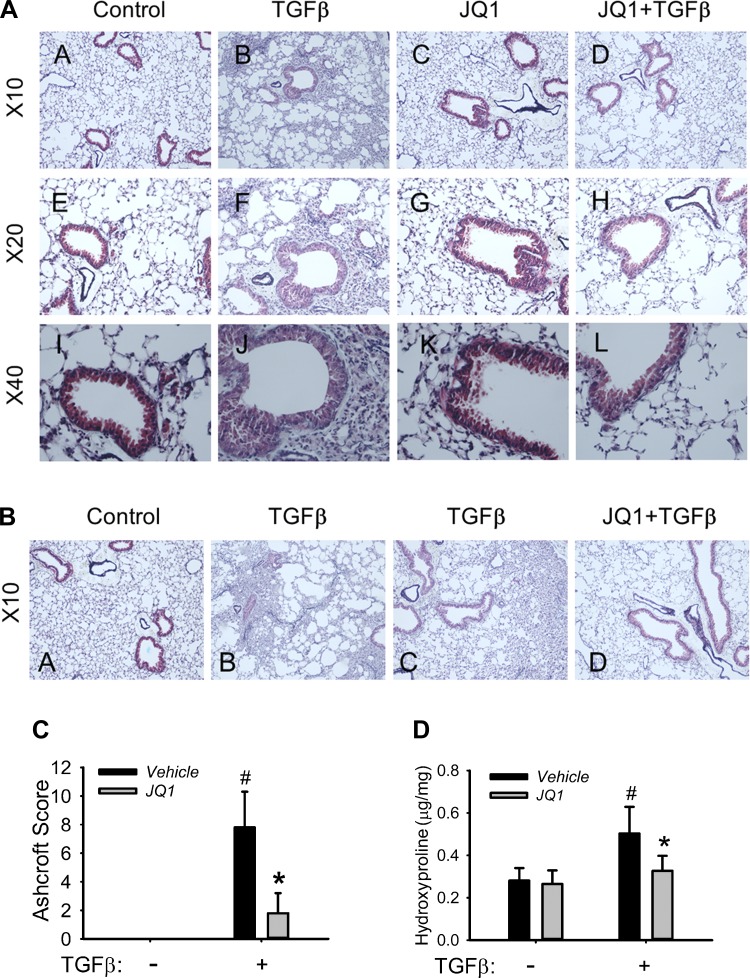Fig. 9.
BRD4 mediates TGF-β-induced pulmonary fibrosis in mice. Eighteen-week-old C57BL/6 mice were pretreated ± JQ1 (50 mg/kg body wt ip; n = 5) and given repetitive intranasal challenges with TGF-β (1 μg/mouse every other day for 30 days). A: morphological changes. Masson trichrome staining of lungs from C57BL/6 mice chronically treated in the absence (AA and AC) or presence (AB and AD) of TGF-β; 2 groups of mice were treated with JQ1 (50 mg/kg, AC and AD). Images were taken at magnifications of ×10 (AA–AD), ×20 (AE–AH), and ×40 (AI–AL). B: additional histology. Images from different regions of lungs from mice chronically treated in the absence (BA) or presence (BB–BD) of TGF-β. Mice were also treated with JQ1 (50 mg/kg) in the presence of TGF-β (BD). All images were taken at ×10 magnification. C: Ashcroft scoring. Levels of lung fibrosis with assessed with the Ashcroft scoring method. *P = 0.002 compared to without JQ1 and #P < 0.001 compared to without TGF-β from n = 5 experiments. D: total collagen content. Whole lung hydroxyproline content was determined in all treatment groups. *P = 0.026 compared to without JQ1 and #P = 0.007 compared to without TGF-β from n = 5 experiments.

